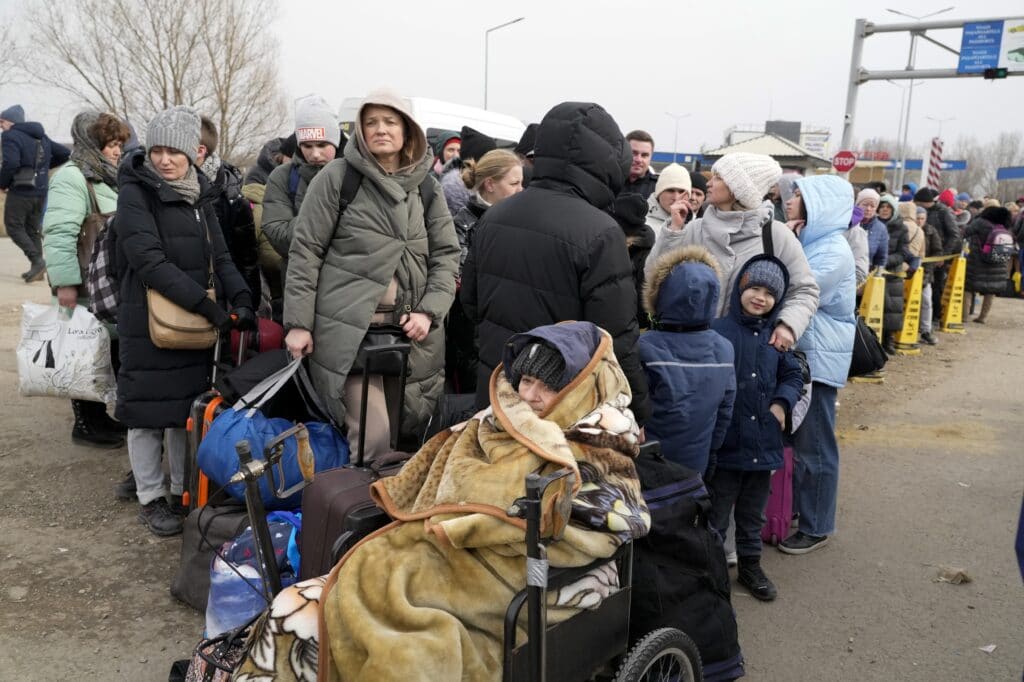Reports from Ukrainians in the cities under siege tell how the Russians are “resorting to tactics reminiscent of medieval siege warfare, encircling cities, cutting off escape routes and pounding the civilian population with heavy ordnance.” However, there is some progress toward establishing safe, humanitarian corridors for civilians to escape the fighting. The Associated Press has the story:
Doubt whether Russia will really honor humanitarian escape corridors
LVIV, Ukraine (AP) — The humanitarian crisis in Ukraine deepened Monday as Russian forces intensified their shelling and food, water, heat and medicine grew increasingly scarce, in what the country condemned as a medieval-style siege by Moscow to batter it into submission.
A third round of talks between the two sides ended with a top Ukrainian official saying there had been minor, unspecified progress toward establishing safe corridors that would allow civilians to escape the fighting. Russia’s top negotiator said he expects those corridors to start functioning Tuesday.
But that remained to be seen, given the failure of previous attempts to lead civilians to safety amid the biggest ground war in Europe since World War II.
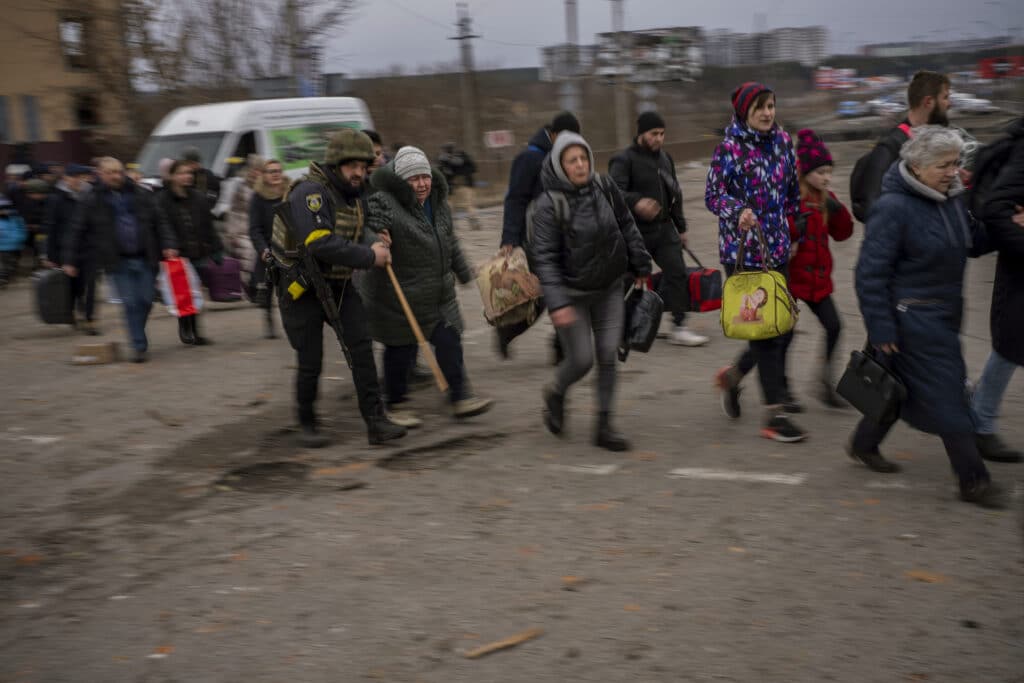
Russian President Vladimir Putin’s forces continued to pummel cities with rockets, and fierce fighting raged in places.
In one of the most desperate cities, the encircled southern port of Mariupol, an estimated 200,000 people were hoping to flee, and Red Cross officials waited to hear when a corridor would be established.
The city is short on water, food and power, and cellphone networks are down. Stores have been looted as residents search for essential goods.
Police moved through the city, advising people to remain in shelters until they heard official messages broadcast over loudspeakers to evacuate.
Hospitals in Mariupol are facing desperate shortages of antibiotics and painkillers, and doctors performed some emergency procedures without them.
The lack of phone service left anxious citizens approaching strangers to ask if they knew relatives living in other parts of the city and whether they were safe.
In the capital, Kyiv, soldiers and volunteers have built hundreds of checkpoints, often using sandbags, stacked tires and spiked cables. Some barriers looked significant, with heavy concrete slabs and sandbags piled more than two stories high, while others appeared more haphazard, with hundreds of books used to weigh down stacks of tires.
“Every house, every street, every checkpoint, we will fight to the death if necessary,” said Mayor Vitali Klitschko.
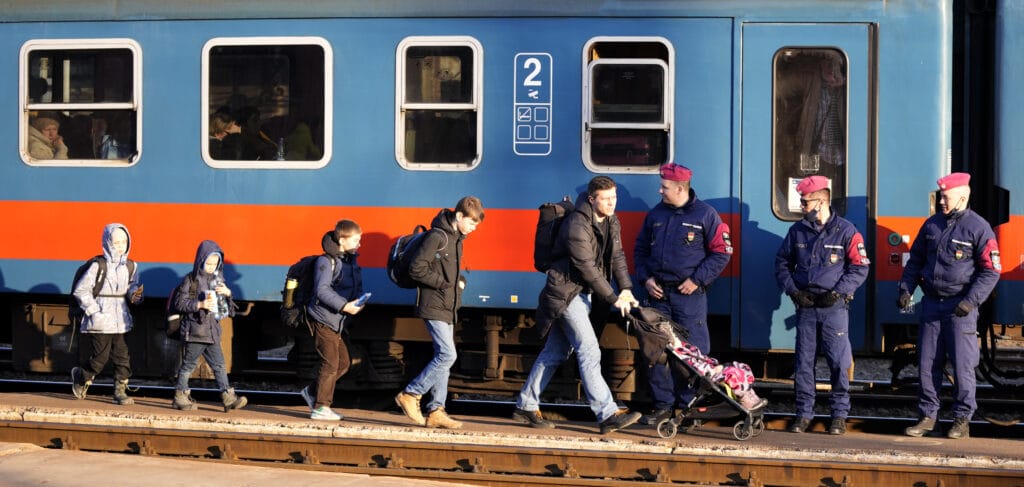
In Kharkiv, Ukraine’s second-largest city, heavy shelling slammed into apartment buildings.
“I think it struck the fourth floor under us,” Dmitry Sedorenko said from his Kharkiv hospital bed. “Immediately, everything started burning and falling apart.” When the floor collapsed beneath him, he crawled out through the third floor, past the bodies of some of his neighbors.
Klitschko reported in a Telegram video address that fierce battles continued in the Kyiv region, notably around Bucha, Hostomel, Vorzel and Irpin.
In the Irpin area, which has been cut off from electricity, water and heat for three days, witnesses saw at least three tanks and said Russian soldiers were seizing houses and cars.
A few miles away, in the small town of Horenka, where shelling reduced one area to ashes and shards of glass, rescuers and residents picked through the ruins as chickens pecked around them.
“What are they doing?” Vasyl Oksak, a rescue worker, asked of the Russian attackers. “There were two little kids and two elderly people living here. Come in and see what they have done.”
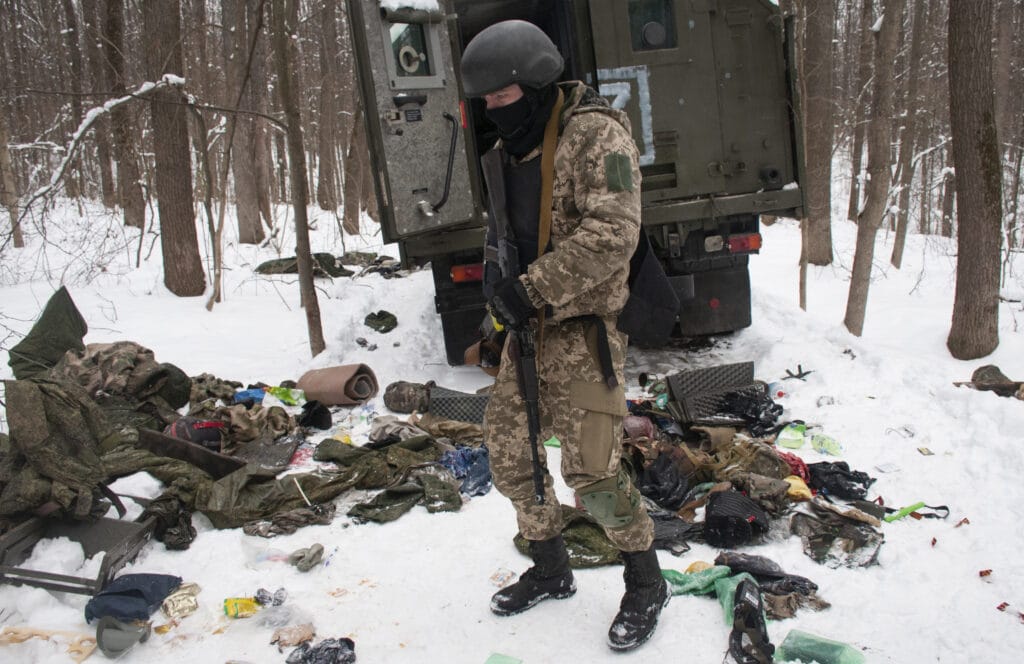
Russian forces also continued their offensive in Mykolaiv, opening fire on the city some 480 kilometers (300 miles) south of Kyiv, according to Ukraine’s military. Rescuers said they were putting out fires caused by rocket attacks in residential areas.
At The Hague, Netherlands, Ukraine pleaded with the International Court of Justice to order a halt to Russia’s invasion, saying Moscow is committing widespread war crimes.
Russia “is resorting to tactics reminiscent of medieval siege warfare, encircling cities, cutting off escape routes and pounding the civilian population with heavy ordnance,” said Jonathan Gimblett, a member of Ukraine’s legal team.
Russia snubbed the court proceedings, leaving its seats in the Great Hall of Justice empty.
Efforts to set up safe passage for civilians over the weekend fell apart amid continued Russian shelling. Before Monday’s talks began, Russia announced a new plan, saying civilians would be allowed to leave Kyiv, Mariupol, Kharkiv and Sumy.
But that offer was quickly dismissed by Ukraine and others as an empty and cynical gesture, since most of the evacuation routes headed toward Russia or its ally Belarus, which has served as a launching pad for the invasion.
Ukrainian Deputy Prime Minister Irina Vereshchuk blasted the proposal as unacceptable.
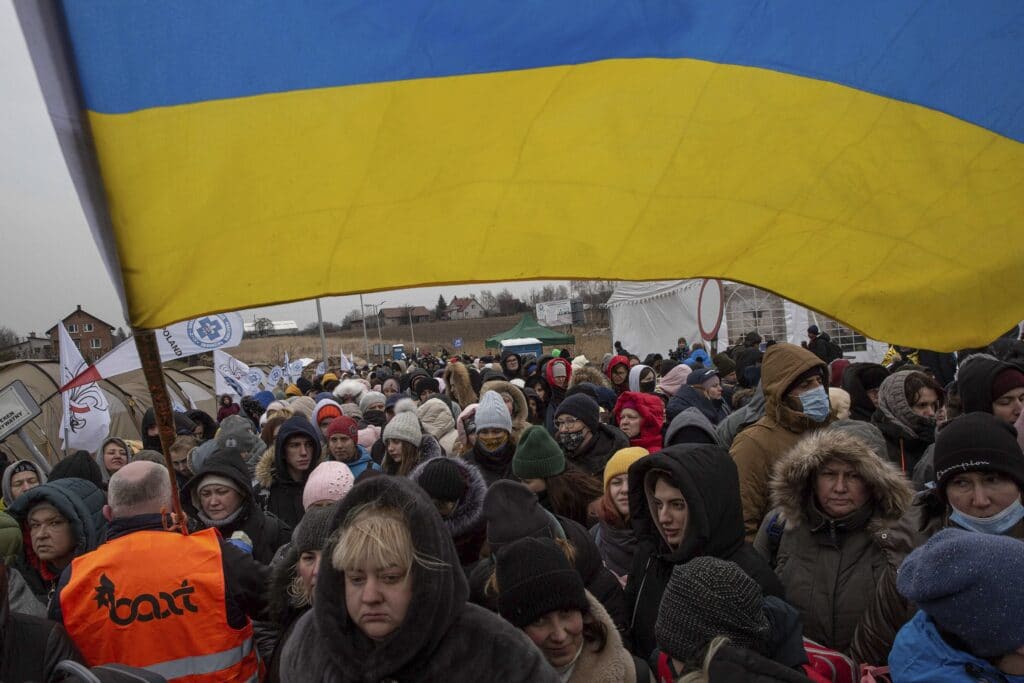
“I don’t know many Ukrainians who want to seek refuge in Russia. That’s hypocrisy,” French President Emmanuel Macron said in an interview on French news broadcaster LCI.
Ukraine instead proposed eight routes allowing civilians to travel to western regions of the country where there is no shelling.
The battle for Mariupol is crucial because its capture could allow Moscow to establish a land corridor to Crimea, which Russia seized from Ukraine in 2014.
The fighting has sent energy prices surging worldwide and stocks plummeting, and threatens t he food supply and livelihoods of people around the globe who rely on crops farmed in the fertile Black Sea region.
The U.N. human rights office reported 406 confirmed civilian deaths but said the number is a vast undercount. The invasion has also sent 1.7 million people fleeing Ukraine.
Ukrainian President Volodymyr Zelenskyy called for more punitive measures, including a global boycott of Russia’s oil exports, which are key to its economy.
“If (Russia) doesn’t want to abide by civilized rules, then they shouldn’t receive goods and services from civilization,” he said in a video address.
Russia’s invasion has nearby countries terrified that the violence could spread.
U.S. Secretary of State Antony Blinken began a lightning visit to the Baltic states of Latvia, Lithuania and Estonia, former Soviet republics that are NATO members. Blinken hoped to reassure them of the alliance’s protection.
The West has rushed weapons to Ukraine, but NATO has shown no interest in sending troops into the country and has rejected Zelenskyy’s pleas to establish a no-fly zone for fear of triggering a wider war.
By YURAS KARMANAU
Associated Press reporters from around the world contributed to this report.

